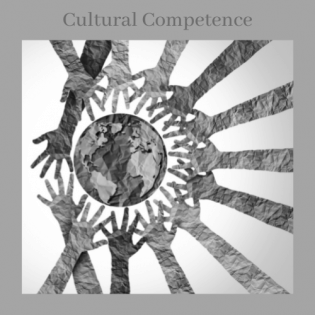Culture-Based Apparel
Cultures are sometimes represented through clothing items like head wear or colors. These clothing items can be very meaningful and important, and it is respectful to learn about others and what their cultural expression means to them. It is never okay to mock someone for what they wear or to say they shouldn't wear it because it is different. This lesson raises awareness of the meaning of cultural expression and the danger of stereotypes.
- Indentify several types of culture-based clothing items
- Understand what a sterotype is and how it relates to clothing
poster-making materials (construction paper, printed images, markers)
Find and present images of hijabs, dashikis, saris, and kippahs. You may print these images for the Giving Back activity.
This lesson is an awesome opportunity to invite a guest speaker with first-hand experience wearing a culture-based clothing item. Youth can have their questions answered as well as put a face to a topic.
stereotype: a hurtful belief about a group of people based on how they look
Ask the youth if their family has any clothing items from their culture.
Is your community welcoming to people who might wear hijabs or kippahs? How would you react if you heard someone laughing about another person’s clothing?
- The Proudest Blue by Ibtihaj Muhammad
- Video, “My Culture is NOT a Costume” [https://youtu.be/d6Y5cARFJw8]
- Website, “We’re a culture, not a costume” poster campaign [https://www.ohio.edu/orgs/stars/Poster_Campaign.html]
Instructions
Anticipatory Set:
Show the cover and a few pages of the book "The Proudest Blue." Ask what they notice, what they know, and what they wonder about the images.
Explain to the group that some cultures feature particular articles of clothing or headpieces. Show the youth images of hijabs, dashikis, saris, and kippahs. These may be related to that culture’s faith traditions, views of modesty, climate, the types of fabric that are common in the area, or another aspect of the culture.
Read aloud and discuss the story, The Proudest Blue.
Have the young people, individually or in pairs, research each type of cultural dress shown, and share to the group what culture it represents.
Discuss:
While traditional clothing and headwear are common and celebrated within a culture, they are not always treated with kindness and respect by others from different cultures.
Some people try to demand others lose their traditional cultural clothing and adapt to other ways of dressing.
Sometimes people stereotype others because of the clothes they wear. A stereotype is deciding/assuming something negative about a group of people based on how they look. Ask the group, “have you ever felt stereotyped (like people decided something incorrect about you) because of how you looked?”At Halloween, some people dress up in costumes they think represent a people, but this oversimplifies and misrepresents what is important to people in that culture. Share the video, “My Culture is NOT a Costume.”
Introduce the video by saying that these are some examples of stereotypes other young people have encountered about their culture.
Discuss how these people feel and why it is offensive.
Giving back to the community: The “We’re a Culture, Not a Costume” poster campaign fights hurtful stereotypes used as costumes. With the group, research the campaign and have the youth make a poster raising awareness of this problem. They can add the cultural apparel they’ve learned about to the campaign with a poster.
Philanthropy Framework
-
Strand PHIL.II Philanthropy and Civil Society
-
Standard PCS 02. Diverse Cultures
-
Benchmark MS.2 Describe the importance of hearing all voices in a community and respecting their right to be heard.
-
Benchmark E.2 Discuss the importance of respect for others.
-
Benchmark E.4 Demonstrate listening skills.
-
Benchmark MS.5 Discuss examples of groups denied their rights in history.
-
-
Standard PCS 07. Skills of Civic Engagement
-
Benchmark E.2 Discuss an issue affecting the common good in the classroom or school and demonstrate respect and courtesy for differing opinions.
-
-
